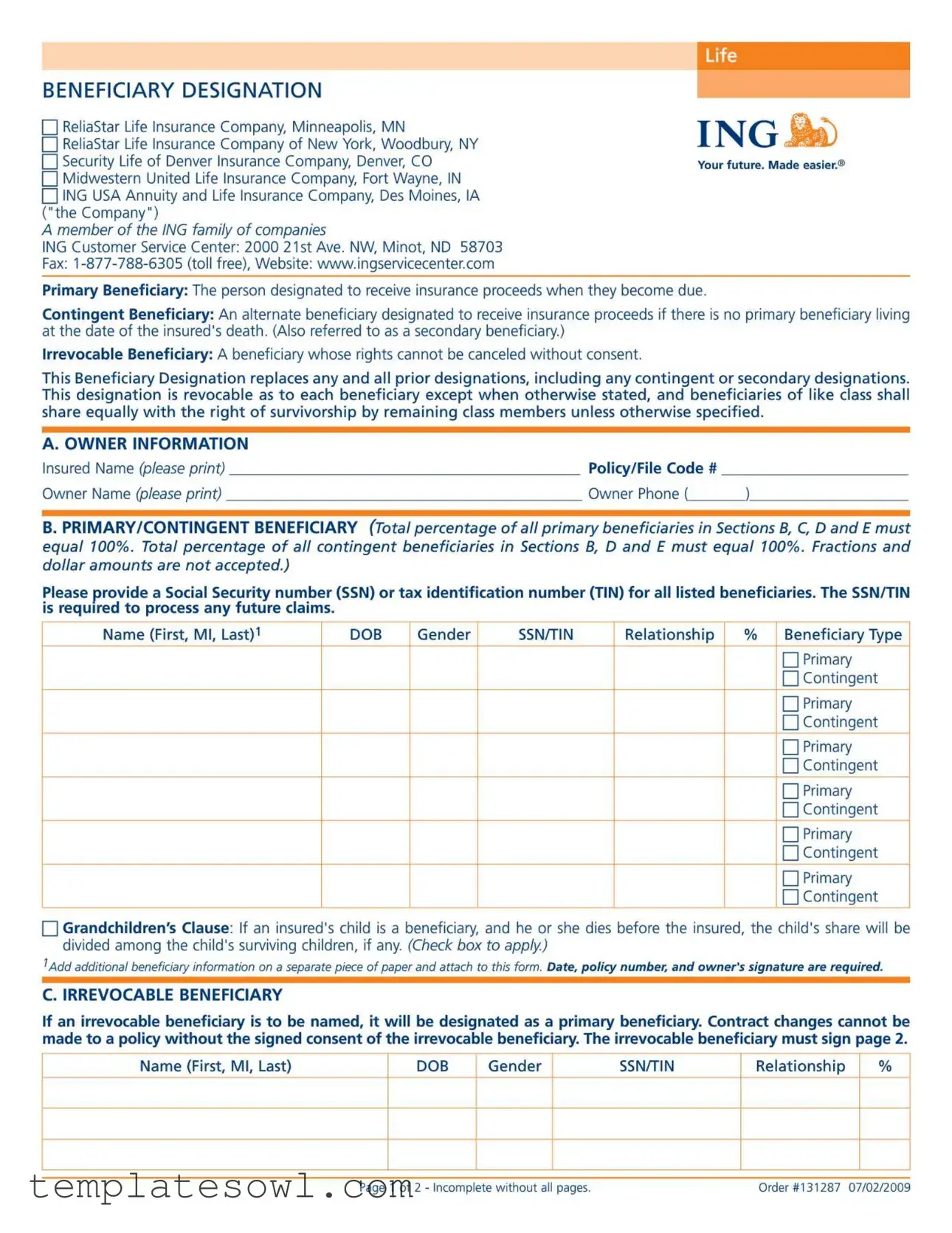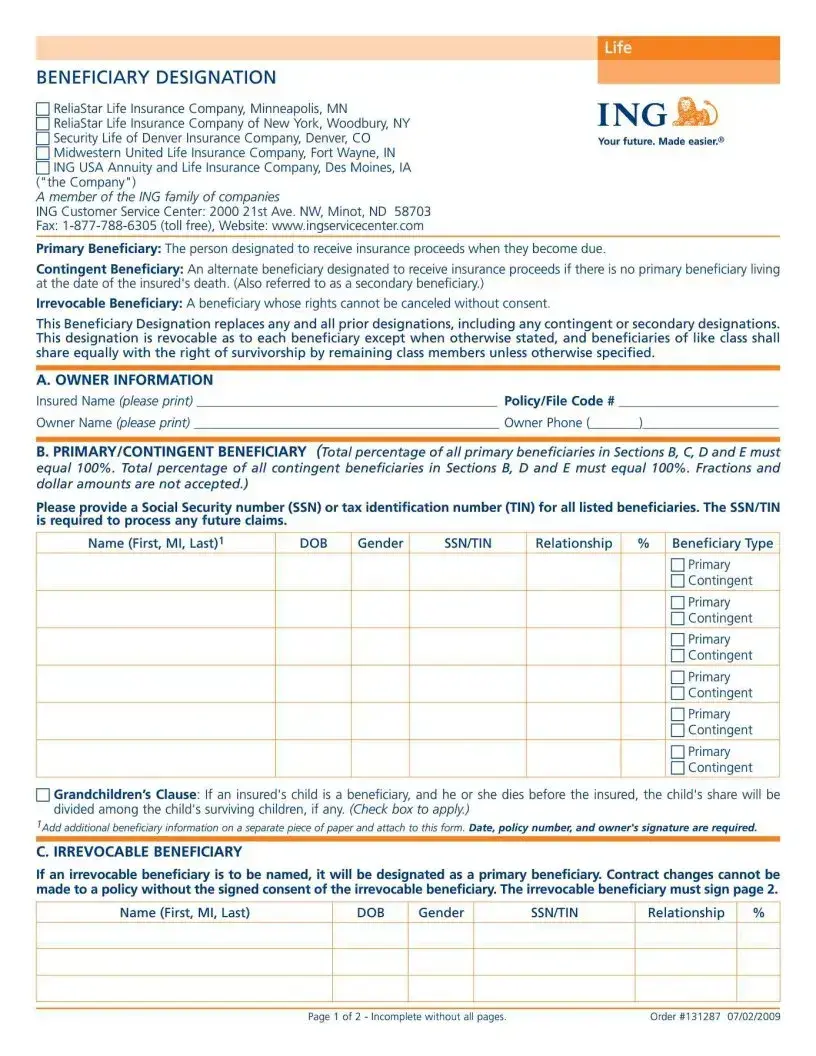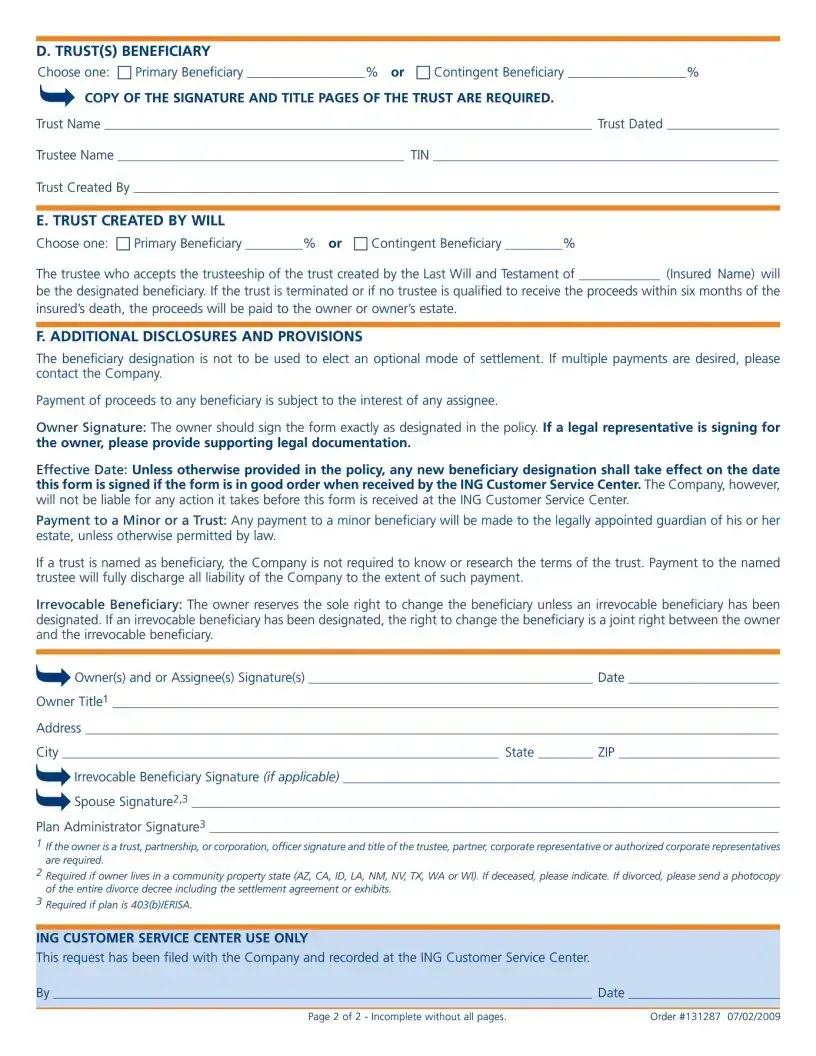Filling out the ING Beneficiary form is an important step in ensuring that your loved ones receive the intended insurance proceeds. However, several mistakes can arise during this process, which may lead to complications down the line. Understanding these common pitfalls can help you avoid them.
One frequent error occurs when individuals fail to designate both a primary and a contingent beneficiary. In the event that the primary beneficiary is no longer living at the time of the insured's passing, the lack of a contingent beneficiary can delay payouts and create unnecessary legal challenges. Clearly outlining both beneficiaries on the form is essential for smooth processing.
Another mistake involves incorrect or incomplete social security numbers (SSNs) or tax identification numbers (TINs). Each beneficiary must have this information accurately recorded. If a claim needs to be processed and the documentation is lacking, it can lead to significant delays. Even simple typos can thwart the entire process, underscoring the importance of double-checking these details.
A third common issue is failing to indicate the percentage distribution among beneficiaries. The total percentage for primary beneficiaries must equal 100%, just as the total for contingent beneficiaries should also reach 100%. Omitting or inaccurately calculating these distributions can cause confusion or disputes later on. Each beneficiary’s share should be carefully calculated and clearly specified to prevent any ambiguity.
Additionally, some people neglect to sign the form correctly. The owner’s signature should match exactly how their name is designated in the policy. If a legal representative is signing on behalf of the owner, relevant documentation should be attached. Failing to comply with these requirements can render the form ineffective and delay the process of benefit distribution.
There are also those who do not consider the implications of naming an irrevocable beneficiary. If an irrevocable beneficiary is designated, the owner can only change this status with the irrevocable beneficiary's consent. Understanding this limitation is important, as it can affect future decisions regarding the beneficiary designation.
Lastly, attaching necessary additional documents is often overlooked. If you are naming a trust or another third party as a beneficiary, copies of the relevant legal documents must accompany the form. This ensures that your wishes are honored and can prevent further complications during the claims process.
Taking the time to avoid these common mistakes can significantly ease the process of managing the ING Beneficiary form. By being thorough and precise in your completions, you can help ensure that your loved ones are properly cared for, without unnecessary delays or confusion.


